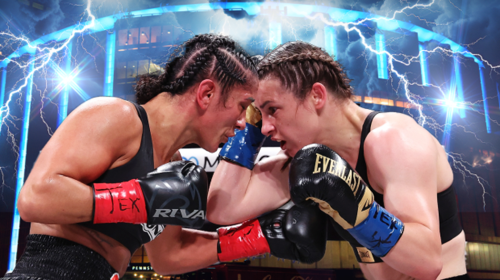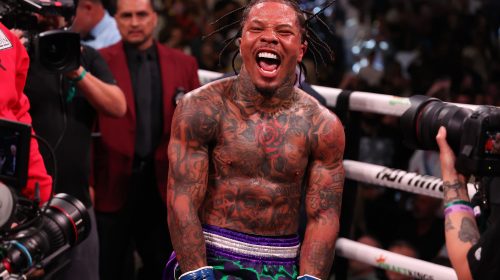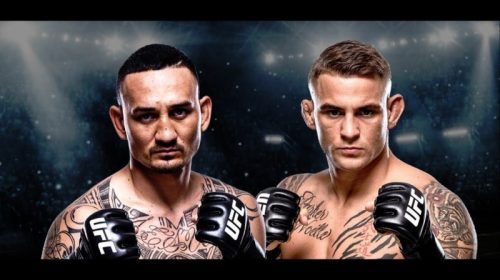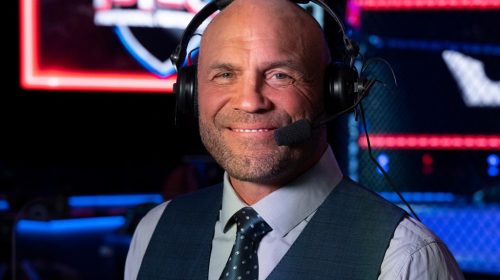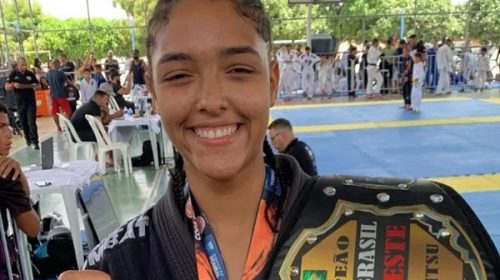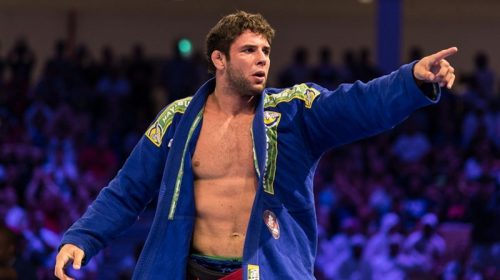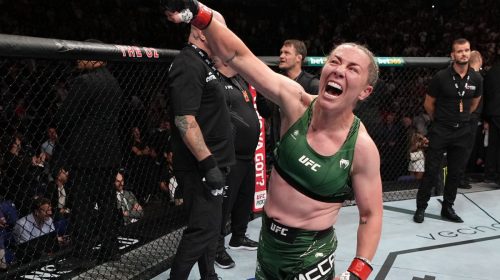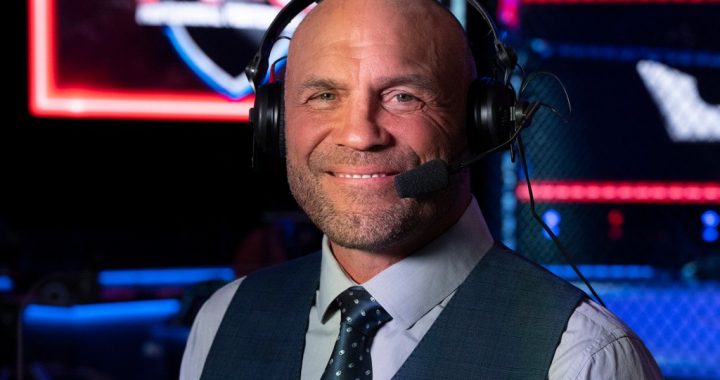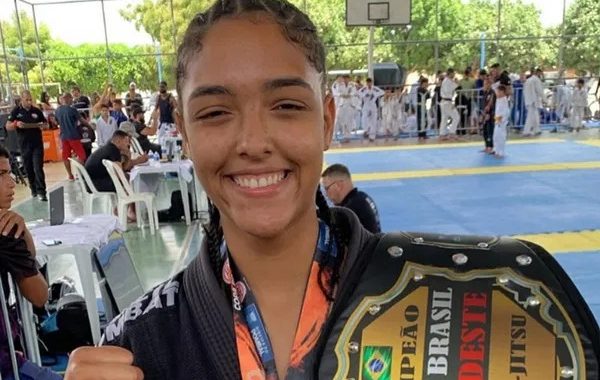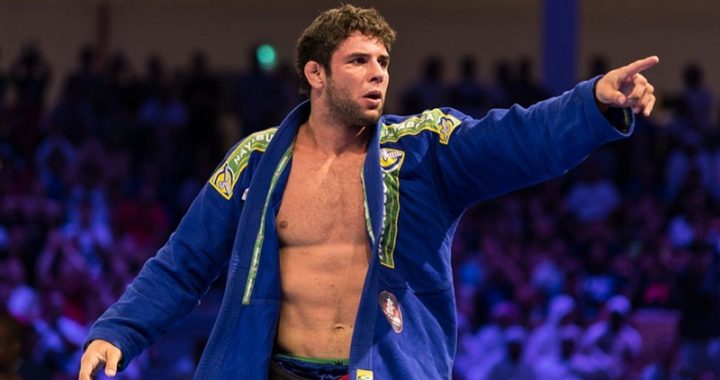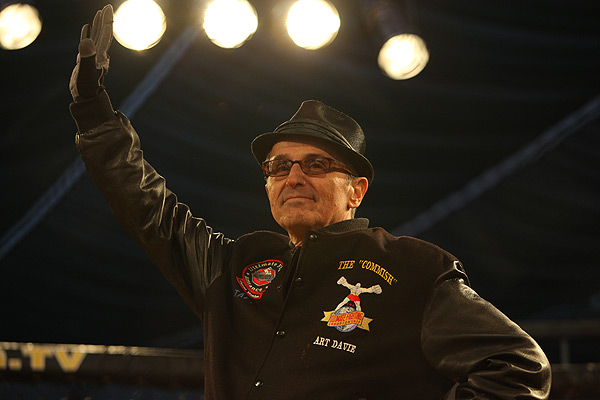
UFC 2018 Hall of Fame Inductee/ UFC Co-Founder and Creator Art Davie talks about the concept of the octagon, 8 man tournaments, and thoughts on the sport of MMA today
One of the founding fathers of the UFC will be inducted into the UFC Hall of Fame this week during International Fight Week. I got to speak with Art Davie ahead of the biggest UFC event of the year.
Sean: Alright this is Sean Lennon, we’re back on the most action packed two hours on Chicagolandsportsradio.com, The Fightlete report and right now my special guest today is Art Davie. Of course he is the co-creator of the UFC back in 1993 when it was originally created. He is also the author of “Is This Legal” and you can check that book out detailing the account of his account of how UFC began and its early days and we just learned that July 5, 2018 in Las Vegas Art will be inducted into the contributary wing of the UFC Hall of Fame and it’s been an honor he’s waited a long time to receive. I know he’s also the recipient of the mixed martial arts legends hall of fame as well and right now we welcome to the fighletet report. Art, how are you doing today and congratulations again on getting this honor.
Art: “Sean, I’m doing really great now that I’ve gotten that award and then last Friday we got the script from our producer and the writers have turned my book into potentially a Hollywood movie. My producer is represented by WME which owns the UFC and the writers are represented by UTA, so package is going out this Monday to 20 different actors, directors and producers so that a package can be developed and prepared for the studio.”
Sean: That’s excellent man, congratulations. That’s going to be optioned into a film. I can only imagine you know how many people it’s going to reach that aren’t familiar with this story of how UFC first started.
Art: “Well, that’s really the key Sean is that there are about 5,000 who named it as who knew that particular old school’s time in the UFC’s history but you know with the potential of the film of being released by a major studio like Sony, this will reach a big audience and I think it’s a good idea in the long run to give the fans some insight into how this all began. I always tell people that in 20 years from today you want to have an answer when your kid turns to you and says hey dad or mom, what was there before the UFC, how did this begin.”
Sean: Excellent man. Yeah, we can’t wait. That’s going to be amazing opportunity for you to be a part of and everybody that’s been a part of the project of, “Is This Legal”. Congratulations to you all and I hope this is a smashing success, no pun intended.
Art: “Thank you.”
Sean: Well, sure and this is not going to be a documentary. This is a full featured, a drama I’m assuming at this point, a sports drama?
Art: “Yes, absolutely, and the two writers have a tremendous track record on television and featured films, so we were really excited to begin working with them last November and they’ve put together a first class script. It’s a Hollywood glamorization theatrical movie about the years that it took to get the UFC up and running and it ends on the first night of the UFC or actually the part after the UFC on November 13, 1993.”
Sean: Excellent man and I can’t believe that 25 years has gone by as well and that the UFC is celebrating their 25th anniversary. Of course the company right now is doing their own kind of promotion for that, but you have another celebration in terms of you and the original people that started UFC 1. You know that’s going to be a second celebration for you guys as well and UFC encompassing the whole 25 years.
Art: “Yeah, I was with the UFC until January 1998, but real excited about the fact that the UFC has gone on to become and the sport has gone on to become a 25 year phenomena and today it extends from Soul, Korea to Oslo, Norway to Buenos Aires to Moscow. From Hong Kong to Bangkok. It’s all over the world today. I am amazed when I get friended on Facebook by fans that are as far away as Afghanistan.”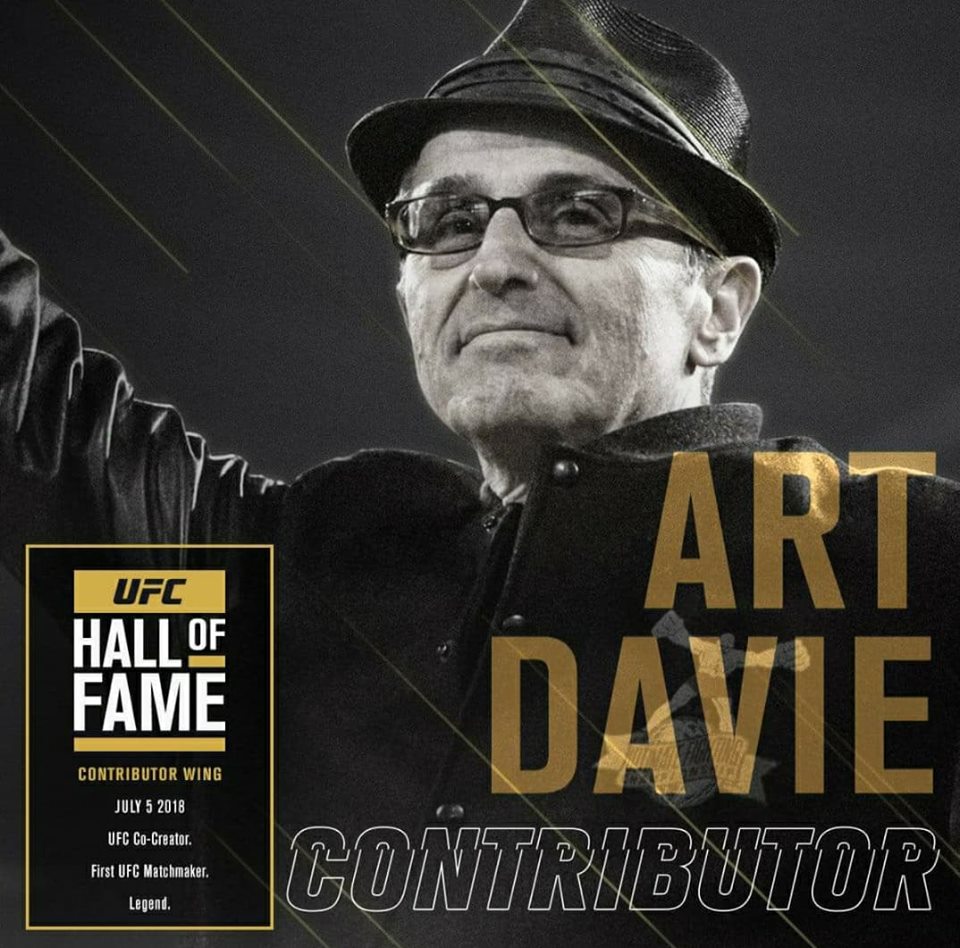
Sean: Yeah, that’s great how fast the sport is growing. You had not anticipated that when you first started this. I mean, this is before the days of contracts and high level endorsements. Guys just wanted to get there and get their name out there and fight and display their martial arts to the best of their ability and it was the unkown of course to go into that cage and figure out what can I do to win this fight.
Art: “Well you know Sean, you look at the fact, the original idea involved a single elimination tournament. There were guys that had day jobs and they were willing to put themselves and their reputations on the line to prove what they had studied and validated and they had to face three components in one night to win the whole thing and you didn’t find out who you were going to fight until the night before at the fighters meeting or the press conference. So it was a different type of guy that fought in those days. They were fighting for nickels and dimes compared to the dollars that are available today. Now, they’re winning 50-60 or 65,000 dollars in the first prize to win the whole plate. So really the guys gone prior went 10 in 1 in his first round with the UFC. They were an incredible group of guys.”
Sean: That is amazing and having gotten an opportunity to interview a lot of the fighters from that decade, from that era, it’s great to see all the different stories and what they went through. There was no big press conference. There were no big weigh-ins rather. That was all kind of in a bathroom, you know. Right?
Art: “Well, I wouldn’t say it was done in the bathroom. It had a lot of publicity at every press conference that we did. You have to remember that the politicians and the media noticed us right away and we became big news. So eventually UFC took off great. You know I got used to tourists from as far away as Rome observatory in Romano putting a Microphone in my face and asking why I was promoting these butcher fights, these brutal fights in North America. You know, it was an interesting time, but we got an awful lot of publicity and notoriety back in the day.”
Sean: Yeah and it’s amazing at just how fast they grow. I mean when I watched it and I’m sure when a lot of other people watched it, there was a video game called Street Fighter that was very popular and seeing these combatants perform from all different backgrounds and nationalities in martial arts, you know one could almost assume this is similar, like brought to life, isn’t that correct?
Art: “Well, I think there was a lot of influence at the time that we could play off of. Number one, there were an awful lot of martial arts movies and the martial arts video games like Mortal Kombat and Street Fighter that were popular. In fact that’s what the people of pay-per-view told me when I approached them about doing pay-per-view. I knew it didn’t belong on broadcasted cable. I was always convinced that an 8 man tournament with the different martial artists with the different men would be a hit on pay-per -view. But for people that were from HBO, Showtime and ESPN disagree. They said look, martial arts belongs in the movies and the video games. It’s never going to be a big time sport on pay-per-view. That’s for the big boys. If you’re any good at the martial arts they would tell me, you left the martial arts and you went into the TV and the movies and they would say things to me like what about Bruce Lee, Chuck Norris, Steven Siegal, Jean-Claude Van Damme. Anybody that’s good with martial arts gets out of it and goes into the TV or the movies. So you know there was an awful lot of negative thinking at the time and all the experts in the martial arts world, they didn’t want us to do these. They had been teaching that what they were promoting and selling was invincible and was the right way for self-defense. None of them were willing to put it up and prove it. I got turned down by all the big names in the beginning. You know 90% of the people that I called on said is this for real. I said yes. They said is this a movie. I said, no it’s not a movie. This is a real thing. So an awful lot of guys said no. That’s why Sean, I dedicated the book, I did with Sean Wheelock to the 10 fighters who said yes and participated in the tournament and were there as alternates for UFC.”
Sean: And talk about the concept of the octagon.. How you came up with that and different ideas prior to that. Today, how do you feel about the different concepts for the cage. You know, we’ve seen square cages, circular cages and even you know fight being held in a ring. Do you have any preference today where a fight be held or does the octagon still hold up as your favorite?
Art: “Well the octagon was a vivid creation and it was a collaborative effort. Rorion Gracie and I had written a memo in which we detailed what we wanted it to have and what we didn’t have it to have. Our TV partners were encouraging us to simply run a boxing ring because A, it was familiar. Fans knew what a boxing ring was and it was fairly inexpensive. You could get in a boxing ring for you know, reasonable money. We didn’t want a boxing ring because we weren’t doing boxing. This was something different and Rorion Gracie’s family in Brazil had experience with boxing rings and they were very negative about them. If you went to the ground and rolled out at the lower ring, the low rope, the fight would get stopped and it was a fighter would use to delay the ballet and to change the advantage position that he was in. So we had written a memo where we detailed what it needed to be and what it didn’t need to be. I wanted a 30-foot enclosure. Boxing rings were 20 to 24-feet. I wanted 30-feet and that was similar to the wooshoo platforms that the Chinese were using in Asia and I wanted a foam rubber pad under the canvas because I knew we were going to have rappas and people were going to be dropped on their shoulders and neck. So we wrote this memo and sent it to our TV partners and they looked at it in the standpoint as what the camera needed to deal with because they were going to bring six or seven cameras to that first show including the Chapman plane. So out of that memo and the meetings with our TV partners, they hired two film set designers, Jason Cusson and Greg Harrison and they came up with four or five different designs that were based on a rough cage concept using our memo and we finally picked the one that you’ve seen and that became the octagon and we trademarked and patented it and it’s influenced the type of enclosure that mixed martial arts uses all over the planet.”
Sean: Yeah, I mean it’s the trademark cage today of course and I believe that without that cage, the sport would not be as popular as it is. I just think that brings an element to it.
Art: “Well, you know Sean, I used to say back in the day when I worked as an advertising guy, advertising salesman, I want to be able to show what we’re doing so someone can turn the sound off and they would know that this was different. It was not boxing. It wasn’t wrestling. I wanted an enclosure and a presentation that presented this as something completely new and the Octagon as much as any single thing that we did was successful in communicating the enigmas of our event, the franchise to the audience. By the way this Sunday, I will be having dinner here in Las Vegas with Jason Cusson who now lives in Connecticut who designed the octagon. He’s coming into Vegas. We’re having dinner Sunday night at Diego’s Restaurant. That’s his favorite. Just east of the Las Vegas strip.”
Sean: Oh, that’s great. That’ll be a good time for you guys to reminisce. And what is he doing now days. Is he still working in that industry?
Art: “Oh yeah. He’s a set designer in TV and movies in a lot of the things that you see on television and in films. A great guy and it was brilliant what he came up with years ago. He was the lead dog on creating the Octagon and we looked at his different designs. We finally picked the one that you see today. A couple of UFCs later we rebuilt it. We rebuilt it so it was more transportable. The first UFC, at the end of the event Sean, the line producer Michael Pela came up to me and he was having his people tear it down and they were going to throw it away. I said what are you doing. He said, well it’s a set. We’ll build another one for the next show. I said the next show is in 3 months. At $28,000 to build that. He said yeah, it’s true. I said I got a rental space and I reached in my pocket and took out the key and said here’s the rental space, here’s the address and these people packed it up and took it over and stored it. So UFC toured March of 1994 and brought the original octagon out, reset it up again and went back to business.”
Sean: Wow. That’s a crazy story. I guess at that time they just weren’t used to having something like that. It’s like a monster to them.
Art: “Yeah, anybody that has used a boxing ring would say that from the company that you rented it from. The octagon, the first one that went out, some of them paid $28,000 to build that puppy. The guys that you were with were 50/50 partners before promotions, the company that Rorion and I found in Colorado. So I knew the back a little bit and I’m thinking we’re not throwing that thing away. I said I got a rental space and Pela looked at me and I said really and I said yeah, here’s the key. That’s how it started.”
Sean: Yeah, that is. Man, where is the original one today?
Art: “You know, I can’t answer that question. You know, when Zuffa bought the UFC in 2001 from Sephamore Entertainment. I’m not sure where the original ring mat is for the first UFC. I’ve heard that a lawyer owns it in somewhere in New Jersey and the original octagon probably went too, probably tore down and turned into something else because the replacement that we built a couple shows in was the one that Ross Miller and it was more packable into a box. Yeah, it was much more transportable.”
Sean: Okay.
Art: “It was now designed so that we can ship from city to city and it wasn’t meant for a one time set up.”
Sean: I got you. So it was able to fold down or be taken apart more efficiently.
Art: “Yeah, it could really be folded up. It was really brilliant. It was like a Japanese origami thing. It would fold up into a small thing and you could fit it into the kind of box that you would normally ship a set or a lot of cameras. Beautiful.”
Sean: Yeah, that’s excellent man. You guys obviously devised a great tool and platform to have your product on.
Art: “Absolutely.”
Sean: My next question Art is why does it take it so long for you to be in the UFC Hall of Fame. In your opinion why has it taken so long for you to receive this honor?
Art: “Well, you know a lot of things have evolved and changed over time. You must remember that in the early days we had presented this more as a spectacle and over time between UFC then and UFC today. I wrote the rulebook for UFC with John McCarthy and Jeff Blatnick and there was an evolutionary process that moved this in the direction of a sport. That process got really accelerated when Zuffa bought it in 2001 and then in 2006 they hired Marc Ratner who had been the executive director of the Nevada state athletic commission. They brought into the company as the vice president of the government relations and Marc did a great job. He belongs in the hall of fame in that he got all 50 states to sanction it. I got the first state; Mississippi back in 1997 I believe it was, but Marc got everybody else, including the 9 or 10 provinces in Canada and over time the UFC despite the impression the media and the politicians got more accepted as a sport. I think that that Sean had to take place before they could turn around and look back to the past and say by the way we want to properly honor some of the people who were involved in the very beginning and you know I think they honored Bob Meyrowitz two years ago because they were in the process of selling the UFC to the WME, Zuffa was and I think they wanted to honor Bob before that sale took place because I think they suspected that Bob wasn’t well known. Not as well known as I was quite frankly and they wanted to honor him before that sale took place, which is what they did.”
Sean: Okay. So for your standpoint, do you feel like this came too late or are you just appreciative right now?
Art: “No, I think it came actually in some respects maybe the best and appropriate time. Twenty five year anniversary I think is a great time to bring me into the hall of fame. I’m really excited about that for that reason and I always thought when I started getting interviews, I gave a lot of credit to Zuffa coming onboard in 2001. They took a lot of chances. They spent a lot of money. They made a lot of good decisions and they brought it into the mainstream. If they hadn’t been successful at necessitating the UFC. There was a lot of fire by 2000 to 2001. By bringing the UFC back to life, I’m having this conversation with you today and I’m being inducted into the hall of fame on July 5th because of what they did. If the UFC had died back at the beginning of the millennium, I wouldn’t be talking to you about the UFC today.”
Sean: Right.
Art: “There wouldn’t be anything to talk about.”
Sean: Yeah, that’s interesting that you make that point, but talk about the WWE-IMG sale. Did it effect a lot of people that you knew that worked for UFC at the time because there was a lot of layoffs and a lot of people that were there for a great tenures were let go. What was your opinion about that?
Art: “Well, you know I give a lot of credit for Zuffa for the changes and improvements that they made but in a way it was time appropriately brilliant bringing in WME-IMG. They’re a 7 billion company. They have brought up so many powerful entities. They’re the biggest agency in the biggest of town and to bring them on board is to move the UFC to the next level and quite frankly the UFC is at the top of the food chain as the only truly professional brand. Everybody in a sense was a local promoter. Even you know Road FC in China is pretty much the Chinese phenomena. You know you don’t see them in South America or North America. So you’re looking at the UFC being the only international MMA brand really and I think WMA can take it now maybe to the next level and the next level will make it even bigger. When you think about it other than soccer which the rest of the world calls football, the sport that really stands the best chance of becoming fully huge and international is mixed martial arts and you know that’s something I knew from the beginning because I was doing my homework and preparing this idea for presentation and becoming the pitchman for the UFC in those very early. I had read about and found out that over a thousand years the number one sport in the Greek Olympics was pankration which a version of MMA. The only restrictions were no biting and no eye gauging and for a thousand and forty one years until a woman in bar banned it, it was the biggest sport on the planet. I think the future of the UFC and the sport needs to go in that direction. I think even politicians and the media and the establishment of worry around the world, thinking if this war was even bigger and maybe there was the kind of violence and excitement and things created by soccer, could the world stand it. Well it’s become a very naturalistic thing. The fighters of Brazil fighting the fighters of Russia or the fighters from Jordan fighting the fighters from you know Argentina. I think the potential for the UFC and the sport is huge. I don’t think we’ve seen how far it’s going to grow. Long after I’m gone, the UFC and the sport will probably be the number one sporting event on the planet. It has that potential.”
Sean: Wow, yeah, it’s amazing to think about.
Art: “Absolutely.”
Sean: Yeah. Talking about going back to when you helped John McCarthy with the unified rules or you were a part of that whole making process of the rules nationwide. Now that we see state by state, the rules have changed. What do you think about that? The rules changed state by state now and there has actually been changes overall in the nation and national laws have changed recently.
Art: “You know part of the problem that I see and I’m sure a lot of fans might see it as well or better than I do is that the evolution of the sport now involves sanctioning the 50 states, there are 10 provinces in Canada and you know if you learned anything about politicians and bureaucrats it’s that they love to have control. So this was always in my opinion one of the problems that boxing had too many sanctions being brought in and you know differences in how rules were applied, so I’m not happy to see that process, that rationalization of the rules taking place. I was excited when 2001 when the unified rules of MMA were brought in and it became the basis of what happened in the state of New Jersey and later in Nevada. I know that today McCarthy and Sean Wheelock are members of the ABC, the association of boxing commissions and they have had a big effect on trying to coordinate and make consistent on the rules at a national level but I’m more surprised and a little amazed that the rules are amateur and playing by the rules that other states have thrown into the presentation. That is not helping them quite frankly. Quite frankly the thing that could have achieved is the fan. I never lose sight of the fact that the thing that created the UFC was the fans. They picked it up in the very beginning and they stuck with it.
“Ultimately the fans by having their voices heard can really influence where this is all going because ultimately you are building it for people to buy it and the fans in a sense would with their dollars and cents vote. With their checkbooks, their wallet, their pocket book, they’d vote on what they like. So the fans can be a factor in how the UFC and the sport evolves. I’ve always felt that as an ad man I never left sight of the fact that that’s who I was working for was the fans.”
Sean: You know talking about what the fans want, I think Dana White who has managed to take a lot of different concepts, make them happen in the UFC, but one thing that we saw back in 2010, he was asked would women ever compete in the UFC and he saw many MMA fighters like Cyborg, Gina Carano were fighters in StrikeForce and he said that would never happen and a few short years later, it did. So, what are your thoughts about women in mixed martial arts. Do you feel like that’s something that maybe Dana missed the boat on or the sport wasn’t ready for yet?
Art: “Well the sport wasn’t ready for it when I was first asked about it back around 1996, but I think that when Dana finally agreed with it I think it was appropriate and I think we see the quality of some of those fighters that came forward, the audience was ready for it.”
Sean: Definitely and seeing how we’ve had Ronda Rousey transition to Hollywood and other forms of entertainment and it just shows that you know mixed martial arts is bringing stars. Guys like Connor McGregor. Obviously he’s been in a negative light as of late, but you know there are people getting movie roles and getting great opportunities outside of the world of fighting as well.
Art: “I was always pleased that back in the day Oleg Taktarov, the winner of UFC 6 wound up with a nice little career for himself in both American and Russian movies and later Randy Couture made the transition from fighting to the world of films. He’s been in as you know a number of the Expendable movies with Stallone because anything that Randy does, he’s usually a champ at.”
Sean: Oh yeah, definitely man. I think I respect everything that he does and he’s always been fighting for the fighters rights which brings my next question up is what do you think about you know fighters today complaining that they’re not getting paid enough, they’re not getting taken care of either medically or personally and financially they’re coming away with hardly anything with all of this time invested in this sport. What are your thoughts on that and that there is a lot of need for the fighters to maybe possibly organize a union?
Art: “Well, you know the difficulty in organizing a union among people that make their living as individuals, taxi cab drivers are a good example, it’s usually very difficult to create a union around that, because you wind up having two or three different classes of people to be in the union. Very big stars quite frankly don’t need the union and you can’t apply what would be applicable to the stars to the rank in file. So I think there is some basic difficulties in trying to establish a union. On the other hand this is an area that as the sport and the UFC grows will continue to be examined by both the fans, the fighters and the promoters. You know there has always been a line of friction and tension between actors and the studios in Hollywood. Actors argue I’m not being paid enough, I’m not doing that movie and Labelle Warner brothers, Olivia de Havilland did the same thing. Burt Ramsey formed his own production company. So I think it’s inevitable that you’re going to see some fighters have legitimate issues or legitimate claims that they can make to in effect say that the promoters are not doing enough for us and I think this is an on case by case basis as to be considered and dealt with, but there is a lot of history and a lot of different industries where talent you know has to wrestle with management and the ownership in terms of how the pie is divided.”
Sean: You personally, did you have to deal with any of this when you were in charge?
Art: “Yeah, absolutely. You know, I lost fighters to other promoters early on. I lost Marco Ruas, Kimo Leopoldo to promoters in Japan. You know if someone could pay them more than I could at the time, you know, it’s capitalism. It’s an open market. It’s a free market and you know the fighters right to negotiate to the best he or she could get. It’s their sweat, blood and tears that they’re putting out there, their reputation. So if I were a fighter I’d be the first one to say look, I want more. I want this. I want to be treated that way. That’s natural. That’s human nature. It’s also somewhat inevitable that the promotor is going to offer based upon what we think we can do as far as sales, tickets, etcetera. You know, this is what we can afford to pay. So it’s always going to be a wrestling match. That’s not going away. That will continue.”
Sean: Alright, I want to thank you for your time to be on The Fightlete Report today and congratulations on getting the honor, 2018 inductee, induction ceremony for the UFC and it’s an honor to have you on this show and is there anyone that you’d like to thank?
Art: “You know, I’d like to give a thanks to my good friend and partner and really my number one fan Sean Wheelock. He’s with M1 today. They seent him over to China. They’re doing a show I believe just outside of Shanghai. So I’d like to give a shout out to my good friend Sean Wheelock, my partner in crime on, “Is This Legal?” and I of course always want to give my best regards to some of the great people of the UFC. There’s a lot of good people who are working over there and they’re doing a great job.”
Sean: Excellent. I’m sure you’re looking forward to be welcomed with open arms come July 5. Are you going to be at the event as well?
Art: “Well yeah, I’ve got to be. I’ve got to accept it. I’m working on my speech. I’m just about done. I’m polishing it, but I’ll be there. Sean will introduce me. I’ll be there to accept the award and I’ve got people coming in from all over the country. In fact, I’ve got people coming in from foreign countries to be there at the Pearl Theater July 5 at the Palms Hotel in Las Vegas, Nevada.”
Sean: Awesome. Are you going to be at the UFC 226 event? That is what I was referring to.
Art: “I’m sorry. Yes, I will be there. I have tickets to UFC 226. They handed me several tickets to be right there at the octagon. I’ll be there for the big event. I’ll be there for the TUF Finale on Friday. Thursday night at the Pearl Theater and I believe I’ll be there at the press conference on the 4th. So it’s part of international fight week as you know and this is going to be the biggest one of all.”
Sean: Excellent and who do you got DC or Stipe Miocic?
Art: “You know, that to me is a tough one. That to me is a coin toss. I like both fighter by the way, but I think that is one that I’m going to be watching very carefully, biting my nails and enjoying. That’s going to be a great fight.”
Sean: Excellent. Well, hey I want to thank you again for being on the show and congratulations on the honor and enjoy an incredible weekend.
Art: “Thank you so much Sean, it’s always a pleasure to be with you. My best regards. Take care. Keep doing the great job that you’re doing brother.”
Sean: I appreciate it. Take care. Bye.
LISTEN BELOW:
Listen to “UFC Hall of Fame 2018 / UFC Creator and Co-Founder Art Davie Interview” on Spreaker.





